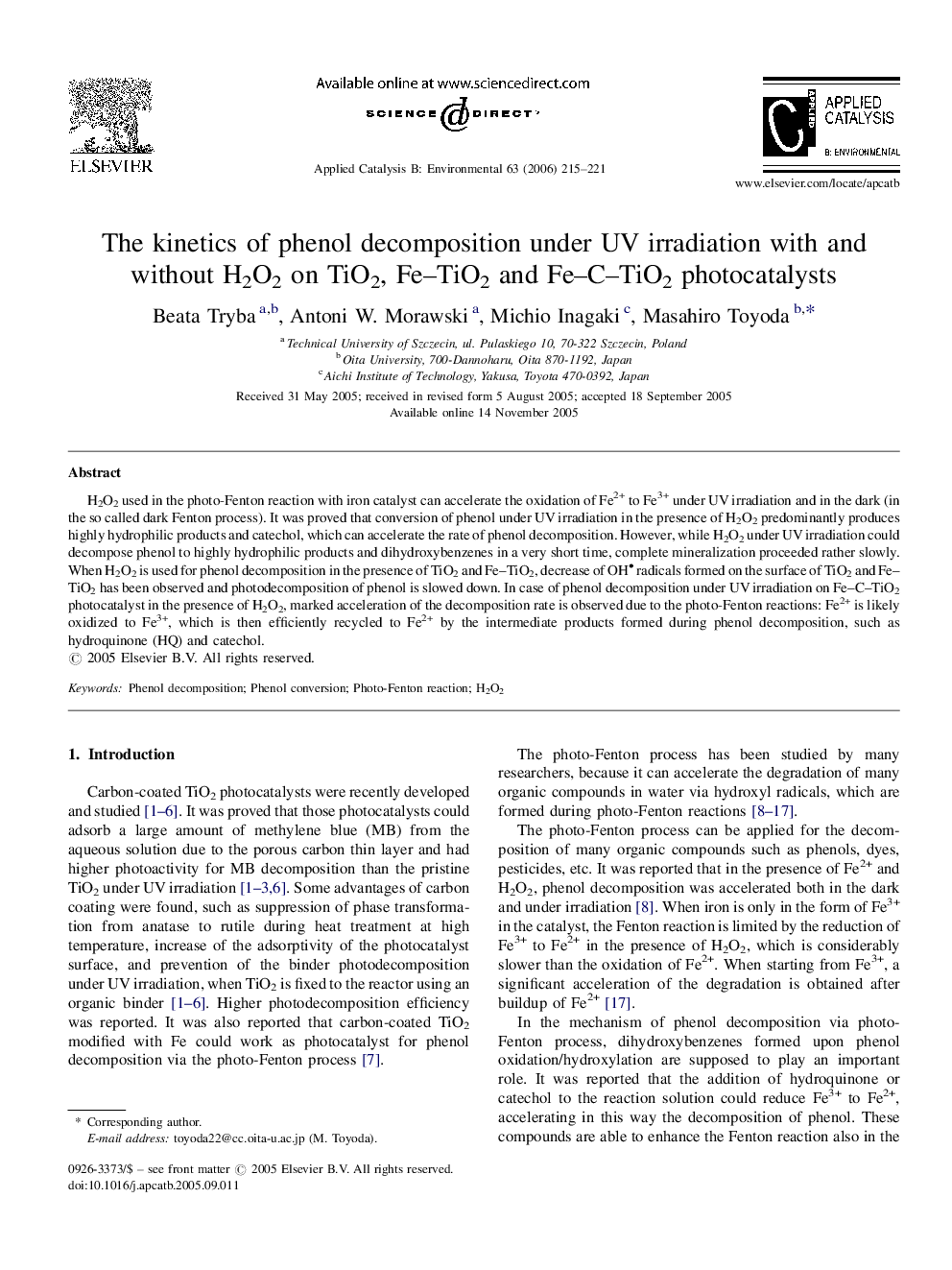| Article ID | Journal | Published Year | Pages | File Type |
|---|---|---|---|---|
| 48881 | Applied Catalysis B: Environmental | 2006 | 7 Pages |
H2O2 used in the photo-Fenton reaction with iron catalyst can accelerate the oxidation of Fe2+ to Fe3+ under UV irradiation and in the dark (in the so called dark Fenton process). It was proved that conversion of phenol under UV irradiation in the presence of H2O2 predominantly produces highly hydrophilic products and catechol, which can accelerate the rate of phenol decomposition. However, while H2O2 under UV irradiation could decompose phenol to highly hydrophilic products and dihydroxybenzenes in a very short time, complete mineralization proceeded rather slowly. When H2O2 is used for phenol decomposition in the presence of TiO2 and Fe–TiO2, decrease of OH radicals formed on the surface of TiO2 and Fe–TiO2 has been observed and photodecomposition of phenol is slowed down. In case of phenol decomposition under UV irradiation on Fe–C–TiO2 photocatalyst in the presence of H2O2, marked acceleration of the decomposition rate is observed due to the photo-Fenton reactions: Fe2+ is likely oxidized to Fe3+, which is then efficiently recycled to Fe2+ by the intermediate products formed during phenol decomposition, such as hydroquinone (HQ) and catechol.
